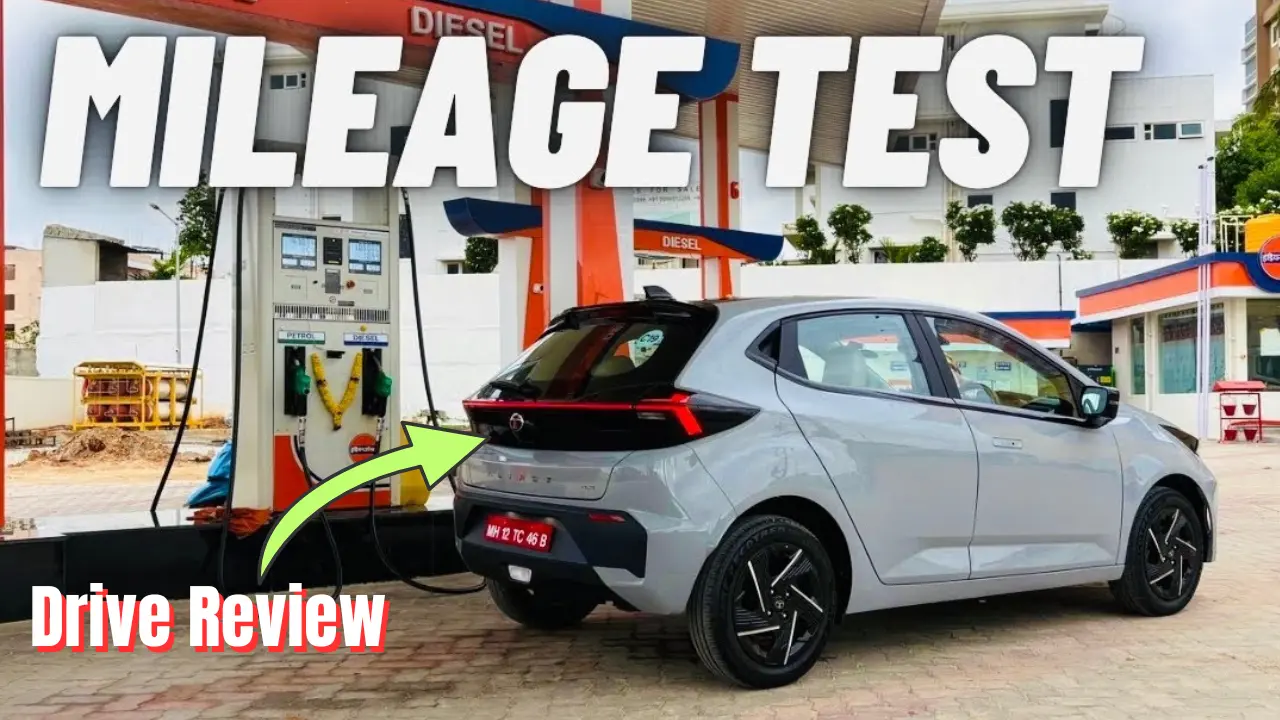2025 Tata Altroz Mileage Test: Tata Motors has given its premium hatchback, the Altroz, a much-needed facelift for 2025, and we’ve spent quality time with the updated car to see if it’s worth the wait. Priced between Rs 6.89 lakh and Rs 11.50 lakh (ex-showroom), the refreshed Altroz brings evolutionary design changes, new features, and importantly, retains its position as India’s last diesel hatchback.
2025 Tata Altroz Facelift Design Changes and New Features
The biggest visual change? Those flush-fitting door handles on the front doors – a segment-first feature that gives the Altroz a cleaner, more premium silhouette. Tata has also redesigned the LED headlamps with what they call “ice cube” projector elements, complemented by eyebrow-shaped DRLs and pixel-like LED fog lamps. At the rear, new LED tail lights are connected by a horizontal light bar that looks particularly striking at night.
But here’s what caught our attention during testing – Tata actually changed the door panels for this facelift, which is unusual since manufacturers typically avoid altering metal parts due to cost considerations. The doors now open a full 90 degrees, making entry and exit more convenient.
Interior Features and Technology
Step inside and you’re greeted by dual 10.25-inch displays – one for infotainment and another for the instrument cluster. The dashboard gets soft-touch elements and a refreshed layout, while the new two-spoke steering wheel features an illuminated Tata logo.
The feature list is comprehensive: ventilated front seats, wireless charging, air purifier (previously exclusive to the Racer variant), voice-enabled sunroof, and a 360-degree camera with blind view monitor. Safety remains a priority with six airbags, ESP, and the car’s existing 5-star GNCAP rating.
Engine Options: Petrol, Diesel and CNG Variants
Here’s where the Altroz continues to stand apart. While competitors have dropped diesel engines, Tata persists with three powertrain options:
- 1.2-litre petrol: 88 bhp, 115 Nm
- 1.5-litre diesel: 90 bhp, 200 Nm
- 1.2-litre CNG: Available with twin-cylinder technology
The big news is the addition of a 5-speed AMT for the petrol variant, joining the existing 5-speed manual and 6-speed DCA options. This makes automatic convenience more accessible to budget-conscious buyers.
Read Also: Tata Harrier EV Launch June 3: 500km Range, AWD, ₹24-30 Lakh Price
Tata Altroz 2025 Mileage Test Results and Fuel Efficiency
We conducted extensive mileage testing, and here’s what we found. The diesel variant delivers an ARAI-claimed 23.60 kmpl, while our real-world testing of the 1.2-litre petrol with DCA automatic returned approximately 15.05 kmpl in mixed driving conditions.
The CNG variant claims 26.90 km/kg, though this falls short of rivals like the Maruti Baleno’s 30.61 km/kg. For context, the Baleno and Toyota Glanza petrol variants achieve 22.35-22.95 kmpl, making them more efficient than the Altroz’s expected 18-20 kmpl.
Driving Experience and Performance Review
The Altroz has always been known for its solid build quality and refined ride, and the facelift maintains these strengths. The diesel engine, in particular, offers a good blend of performance and efficiency, though we wish Tata offered an automatic option with it.
The 1.2-litre petrol feels adequate for city driving, but highway overtakes require planning. The CNG variant is best suited for city runabouts, with noticeable power drop-off during highway overtaking maneuvers.
Tata Altroz 2025 Price and Competition Comparison
At Rs 6.89 lakh for the base variant, the Altroz faces stiff competition from the Maruti Baleno, Toyota Glanza, and Hyundai i20. Its unique selling proposition remains the diesel engine option – something no other hatchback offers anymore.
The design evolution is tasteful; Tata hasn’t tried to make the Altroz look like an SUV, unlike some manufacturers. It retains its hatchback character while looking more contemporary.
Should You Buy the 2025 Tata Altroz Facelift?
The 2025 Altroz facelift addresses many of the previous model’s shortcomings with better features, improved design, and the addition of AMT convenience. However, engine refinement and cabin insulation could still be better.
For buyers seeking a premium hatchback with diesel efficiency, the Altroz remains the only game in town. But if outright fuel efficiency is your priority, the Japanese rivals still have an edge. The facelift makes the Altroz more appealing, but whether it’s enough to significantly boost sales in an SUV-obsessed market remains to be seen.
The author has over a decade of experience testing Indian cars and has driven multiple generations of the Tata Altroz since its 2020 launch.
